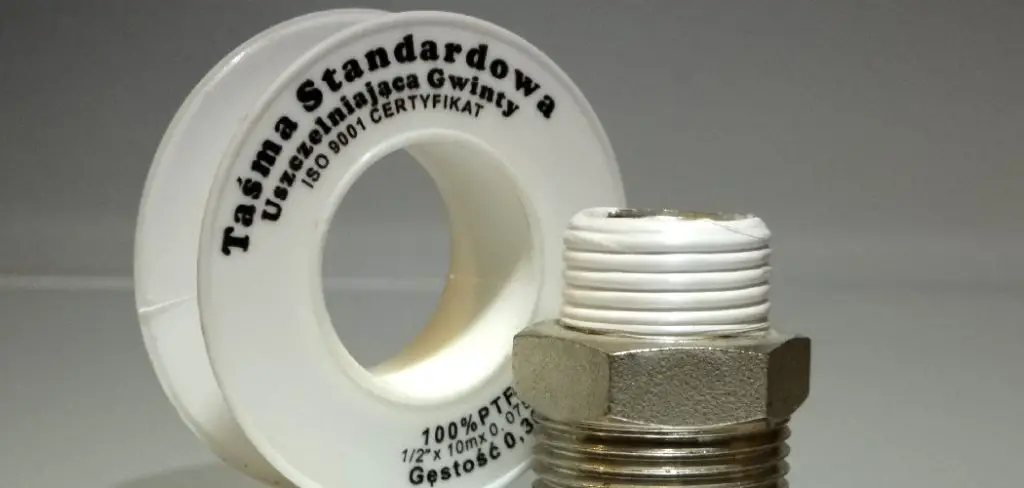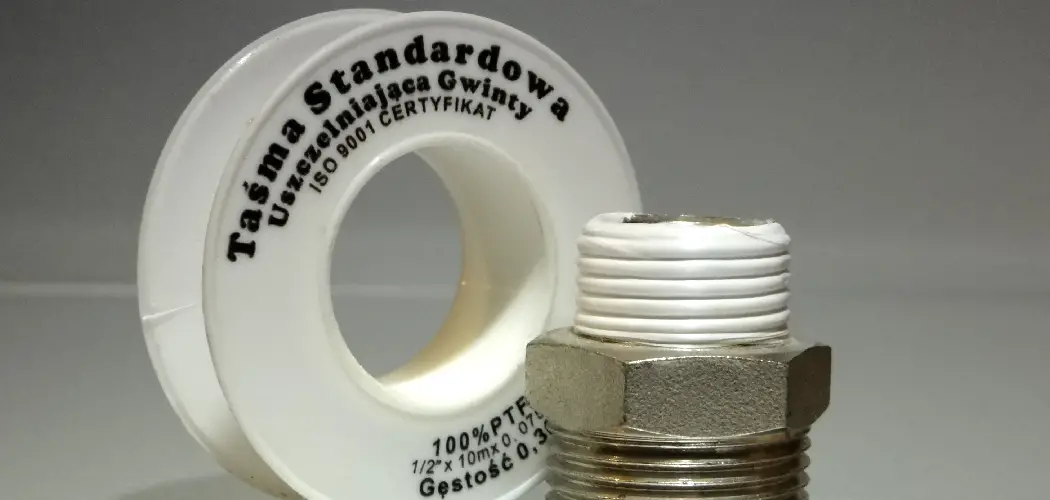To dissolve thread sealant, apply a suitable solvent and brush or scrub the area until the sealant is completely removed. Thread sealant can be a stubborn substance to remove, especially when it has dried and hardened.
Whether you are replacing a fitting or want to disassemble a threaded connection, removing the old sealant is crucial for proper installation or repairs. We will discuss some effective methods to dissolve thread sealant, allowing you to easily remove it from your desired surface.
By following these steps, you can ensure a clean and leak-free connection without damaging the threads or causing any unnecessary delays in your project.

Methods For Dissolving Thread Sealant
When it comes to working with threaded pipes and fittings, applying thread sealant is a common practice to prevent leaks. However, there may be instances where you need to remove or replace the thread sealant. In such cases, it is essential to know the right methods for dissolving thread sealant effectively. Here are three commonly used methods:
Using Heat
Heat can be an effective method for dissolving thread sealant, as it helps loosen the bonds of the sealant, making it easier to remove. To use this method:
- Select the appropriate heat source: You can use a heat gun, a propane torch, or a heat induction tool. Choose the heat source based on the size and material of the pipe or fitting.
- Apply heat to the threaded area: Gently heat the area around the thread sealant for a few minutes, making sure not to overheat the pipe or fitting.
- Use a wrench or pliers: After heating, use a wrench or pliers to carefully loosen and remove the threaded pipe or fitting.
Using Solvents
Solvents can effectively dissolve thread sealant by breaking down its chemical composition. Follow these steps to use solvents:
- Select the appropriate solvent: Choose a solvent that is compatible with the type of thread sealant used, such as acetone or methyl ethyl ketone (MEK).
- Apply the solvent: Use a brush or cloth to apply the solvent to the threaded area. Make sure to apply enough solvent to fully saturate the sealant.
- Allow time for the solvent to work: Let the solvent sit on the thread sealant for a few minutes to allow it to dissolve the sealant.
- Use a wrench or pliers: Once the sealant has been dissolved, use a wrench or pliers to loosen and remove the threaded pipe or fitting.
Using Mechanical Methods
If the thread sealant is stubborn and does not respond to heat or solvents, mechanical methods can be employed:
- Manual scraping or brushing: Use a scraper or wire brush to manually remove the thread sealant from the threaded area.
- Mechanical friction: Tools like wire wheels, sandpaper, or abrasive pads can create mechanical friction to remove the sealant.
- Power tools: In extreme cases, power tools such as grinders or sanders with appropriate attachments can be used, but must be used with caution.
By using one or a combination of these methods, you can effectively dissolve thread sealant and ensure a smooth process when working with threaded pipes and fittings.
Tips For Safe And Effective Thread Sealant Dissolving
If you’re looking to remove thread sealant, it’s important to do so safely and effectively. By following these tips, you can ensure a successful process without compromising your safety or damaging your materials. Remember to always use proper protective gear, test in small areas first, follow the manufacturer’s instructions, and dispose of materials safely.
Use Proper Protective Gear
Before you begin dissolving thread sealant, it’s essential to prioritize your safety. Start by wearing the appropriate protective gear, such as safety goggles, gloves, and a long-sleeved shirt. These items will shield you from any potential splashes or contact with the chemicals in the sealant. By taking this precaution, you can minimize the risk of any accidents or injuries.
Test In Small Areas First
Testing the thread sealant dissolving process in small areas is crucial to ensure that it won’t cause any damage or adverse reactions. Before applying the solvent or remover to the entire surface, choose an inconspicuous spot, such as a hidden or less visible area, and apply a small amount of the solvent. Monitor the area over a period of time to see if any discoloration or damage occurs. If everything looks good, you can proceed confidently with the process on the rest of the sealant.
Follow Manufacturer’s Instructions
One of the most important steps in safely dissolving thread sealant is to carefully follow the manufacturer’s instructions. The manufacturer knows their product best and can provide specific guidelines for proper usage, application, and potential safety precautions. They may recommend a certain type of solvent or remover that is best suited for their sealant. By reading and adhering to their instructions, you can ensure effective and safe dissolution of the thread sealant.
Dispose Of Materials Safely
Once you have successfully dissolved the thread sealant, it’s essential to dispose of the materials properly. Check your local regulations to determine the appropriate method for disposal. In general, you should not pour the leftover solvent or remover down the drain, as it can harm the environment. Instead, seal it in a leak-proof container and bring it to a designated hazardous waste disposal facility. By disposing of the materials safely, you can do your part in protecting both the environment and human health.
Frequently Asked Questions For How To Dissolve Thread Sealant
How Do You Dissolve Thread Sealant?
To dissolve thread sealant, apply a solvent like acetone or mineral spirits to the threaded area. Let it soak for a few minutes, then use a wire brush or toothbrush to scrub away the softened sealant. Rinse with water to remove any residue.
Can You Use Heat To Dissolve Thread Sealant?
Yes, applying heat can help dissolve stubborn thread sealant. Use a heat gun or a blow dryer on the threaded area to soften the sealant. Be cautious not to overheat the surrounding materials, and use protective gloves to avoid burns.
What Happens If You Don’t Remove Thread Sealant?
If thread sealant is not properly removed, it can interfere with the integrity of new fittings or connections. It can create leaks, impair the effectiveness of seals, and cause problems with the overall performance of the threaded assembly.
Is It Necessary To Remove Old Thread Sealant Before Applying New?
Yes, it is crucial to remove old thread sealant before applying a new one. Proper removal ensures a clean surface for the new sealant to adhere to, preventing leaks and ensuring a secure connection. Use solvents, scraping tools, and brushes to completely remove the old sealant.
Conclusion
Dissolving thread sealant requires the right techniques and products. By following the steps outlined in this guide, you can effectively remove stubborn sealant from your plumbing or mechanical projects. Remember to use caution and follow safety precautions when handling chemical solvents.
With a little patience and the right tools, you’ll be able to dissolve thread sealant easily and efficiently. Say goodbye to those stubborn sealant residues and enjoy leak-free connections!

